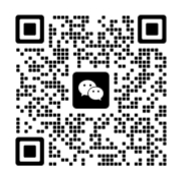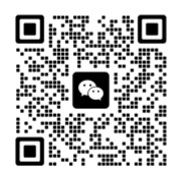Touch creen Monitors have become a ubiquitous feature in modern technology, revolutionizing how we interact with devices across various industries. From smartphones to industrial control systems, touchscreen displays are driving innovation and efficiency. This article explores the market share of touch screen monitors, their applications, and the trends shaping their growth.

The global touch screen monitor market has experienced significant growth in recent years, driven by the increasing demand for interactive and user-friendly devices. According to market research, the touchscreen display market was valued at approximately $65 billion in 2023 and is projected to grow at a compound annual growth rate (CAGR) of 8.5% from 2024 to 2030, reaching over $110 billion by 2030. This growth is fueled by advancements in display technologies, rising adoption of smart devices, and the expansion of applications in sectors like automotive, healthcare, and retail.
- Market Share by Application
1. Consumer Electronics (45% Market Share)
The largest segment of the touchscreen display or monitor market is consumer electronics, which includes smartphones, tablets, laptops, and gaming devices. Smartphones alone account for a significant portion of this segment, with touch screen displays being a standard feature in nearly all modern devices. The demand for high-resolution, responsive displays continues to drive innovation in this sector.
2. Automotive (20% Market Share)
Touchscreen displays are increasingly integrated into vehicles for infotainment systems, navigation, and climate control. The automotive sector is one of the fastest-growing segments, with advancements in connected car technologies and the rise of electric vehicles (EVs). By 2030, it is estimated that over 90% of new vehicles will feature touchscreen displays.
3. Industrial and Medical (15% Market Share)
In industrial settings, touchscreen displays or touch screen monitors are used in control panels, human-machine interfaces (HMIs), and automation systems. Their durability and precision make them ideal for harsh environments. Similarly, the medical sector utilizes touchscreen displays in diagnostic equipment, patient monitoring systems, and surgical tools. This segment is expected to grow steadily due to the increasing adoption of digital healthcare solutions.
4. Retail and Hospitality (10% Market Share)
Touch screen displays and monitors are widely used in retail and hospitality for interactive kiosks, self-service terminals, and point-of-sale (POS) systems. These applications enhance customer experiences and streamline operations. The retail sector is also seeing a rise in the use of touchscreen displays for digital signage and advertising.
5. Other Applications (10% Market Share)
Touch screen monitors are also used in education (interactive whiteboards), gaming (arcade machines), and public infrastructure (information kiosks). These niche applications contribute to the overall growth of the market.
- Key Trends Shaping the Market
1. Rising Demand for Larger and Higher-Resolution Displays
Consumers and businesses are increasingly demanding larger screens with higher resolutions, such as 4K and 8K displays. This trend is particularly evident in the automotive and consumer electronics sectors.
2. Adoption of Advanced Technologies
Technologies like OLED, Mini LED, and flexible displays are gaining traction due to their superior brightness, contrast, and energy efficiency. These innovations are driving the development of next-generation touchscreen displays.
3. Growth of IoT and Smart Devices
The Internet of Things (IoT) and the proliferation of smart devices are creating new opportunities for touch screen displays and monitors. From smart home systems to wearable devices, touchscreens are becoming an essential interface for connected technologies.
4. Sustainability and Eco-Friendly Designs
As environmental concerns grow, manufacturers are focusing on sustainable production methods and recyclable materials. This includes reducing the carbon footprint of touchscreen displays and improving their energy efficiency.
1. Asia-Pacific (45% Market Share)
The Asia-Pacific region dominates the touchscreen display market, driven by the presence of major manufacturers in countries like China, South Korea, and Japan. The region is also a hub for consumer electronics production and innovation.
2. North America (25% Market Share)
North America is a significant market for touchscreen displays, particularly in the automotive and healthcare sectors. The region's focus on technological advancements and smart infrastructure contributes to its strong market position.
3. Europe (20% Market Share)
Europe is a key player in the automotive and industrial sectors, with a growing demand for touchscreen displays in electric vehicles and automation systems. The region's emphasis on sustainability also drives innovation in eco-friendly display technologies.
4. Rest of the World (10% Market Share)
Emerging markets in Latin America, the Middle East, and Africa are witnessing increasing adoption of touchscreen displays, particularly in retail and public infrastructure.
Touchscreen displays and monitors have become an integral part of modern technology, with a significant market share across consumer electronics, automotive, industrial, and retail sectors. As advancements in display technologies continue and new applications emerge, the touchscreen display market is poised for sustained growth. By embracing trends like larger screens, advanced materials, and sustainability, the industry is set to shape the future of human-device interaction in innovative and environmentally responsible ways.

 Your message must be between 20-3,000 characters!
Your message must be between 20-3,000 characters! Please check your E-mail!
Please check your E-mail!  Your message must be between 20-3,000 characters!
Your message must be between 20-3,000 characters! Please check your E-mail!
Please check your E-mail! 

